Will I need to wear a brace?
You'll need a brace for 12 weeks after surgery. Initially, it allows full knee straightening and 30-degree bend for 2 weeks. From weeks 2 to 8, the brace will unlock gradually for increased bending.
DFO is a surgical procedure to realign the lower thighbone, relieving arthritis on one side of the knee and transferring pressure to the healthy side. Common for "knock-kneed" patients with isolated arthritis.
Often chosen by younger individuals with unicompartmental osteoarthritis instead of knee replacement.
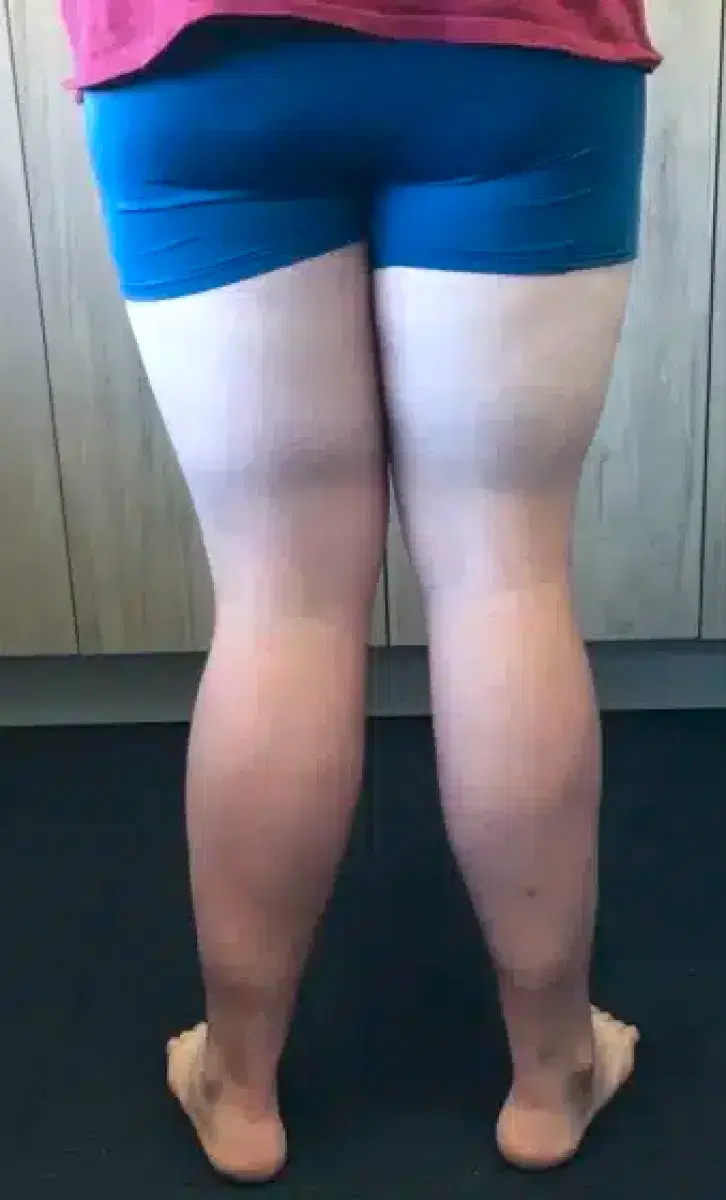
This patient is naturally “knock kneed” however, due to cartilage damage on the outer side of the knee, his left knee is more “knock kneed” than his right.
He is 23 years of age and not suitable for any knee replacement surgery.
You will require a MRI scan of your knee to ensure the other parts of your knee are also not damaged with arthritis.
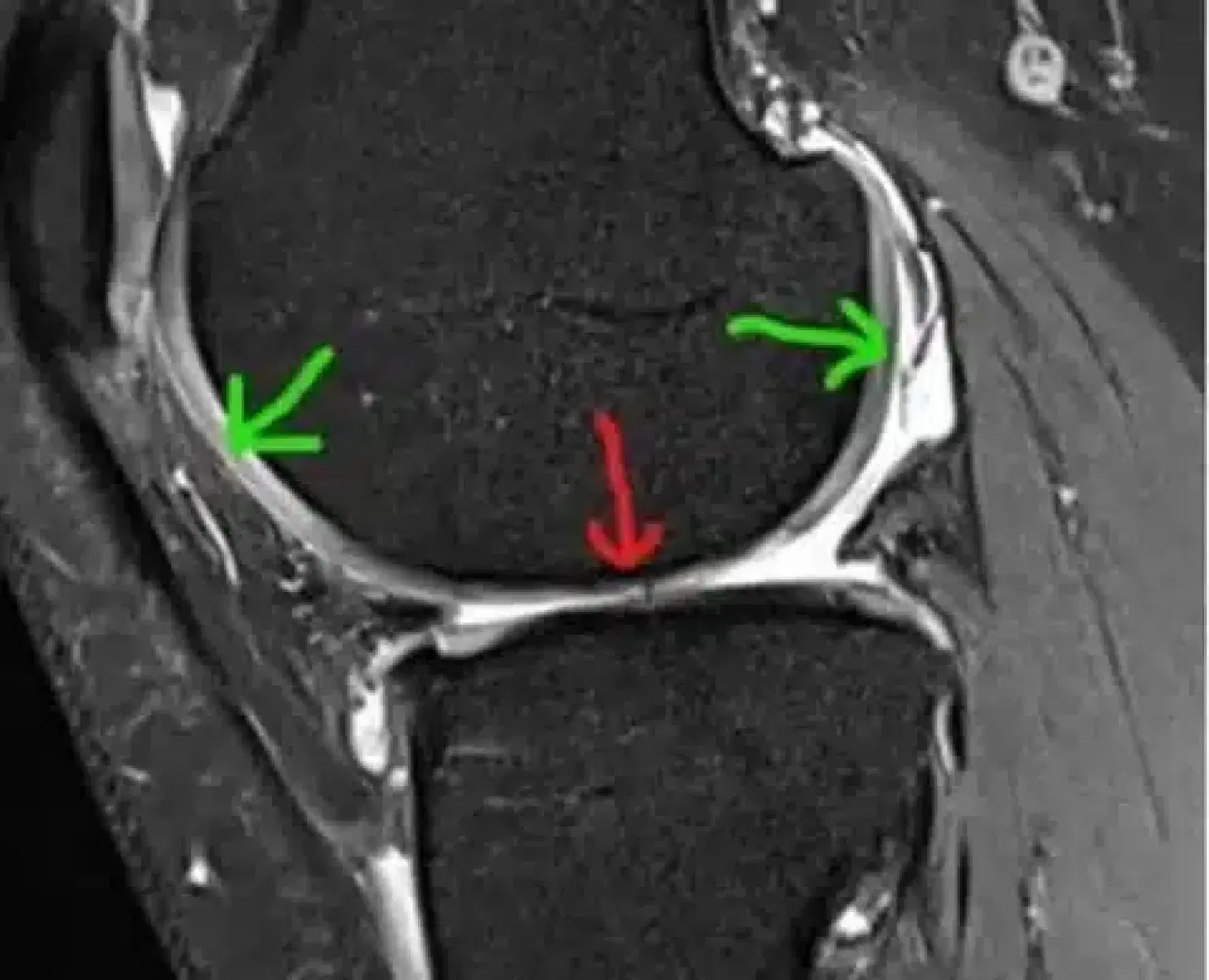 MRI scan showing areas of severe cartilage loss (red arrow) on the outer side of the knee. (green arrows indicate areas normal cartilage)
MRI scan showing areas of severe cartilage loss (red arrow) on the outer side of the knee. (green arrows indicate areas normal cartilage)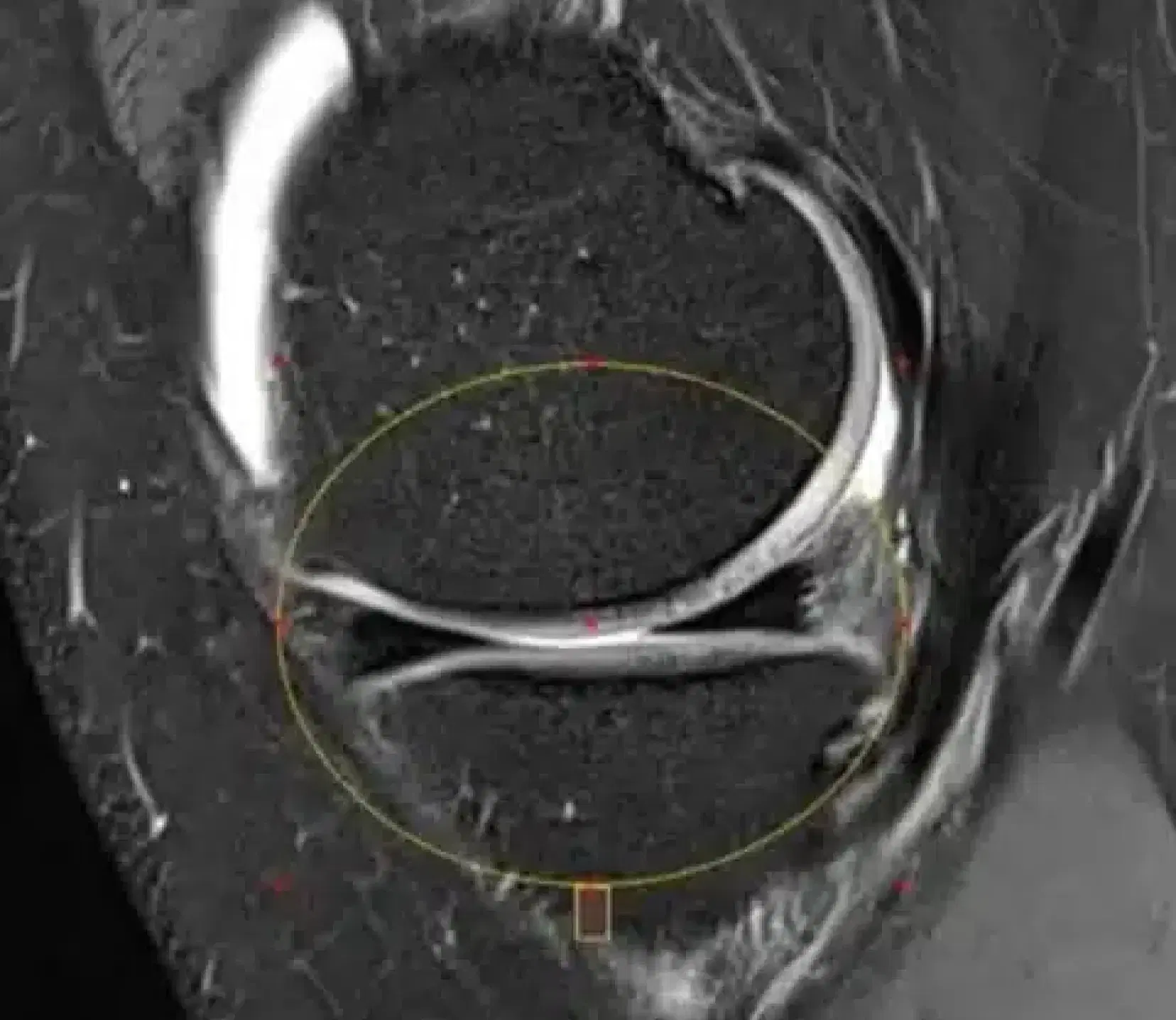 MRI scan showing cartilage on the inner side of the knee is normal (circled).
MRI scan showing cartilage on the inner side of the knee is normal (circled).You will require a special long x-ray from taken from your pelvis to your ankles whilst you are standing. This x-ray helps calculate where most of the load is distributed in your knee, the severity of the deformity affecting the knee as well as the degree of correction required to unload the diseased part of the knee.
Pre surgery long x-ray. The axis (green line) of the left leg is through the outside of the knee. The right leg has had a previous femoral osteotomy.
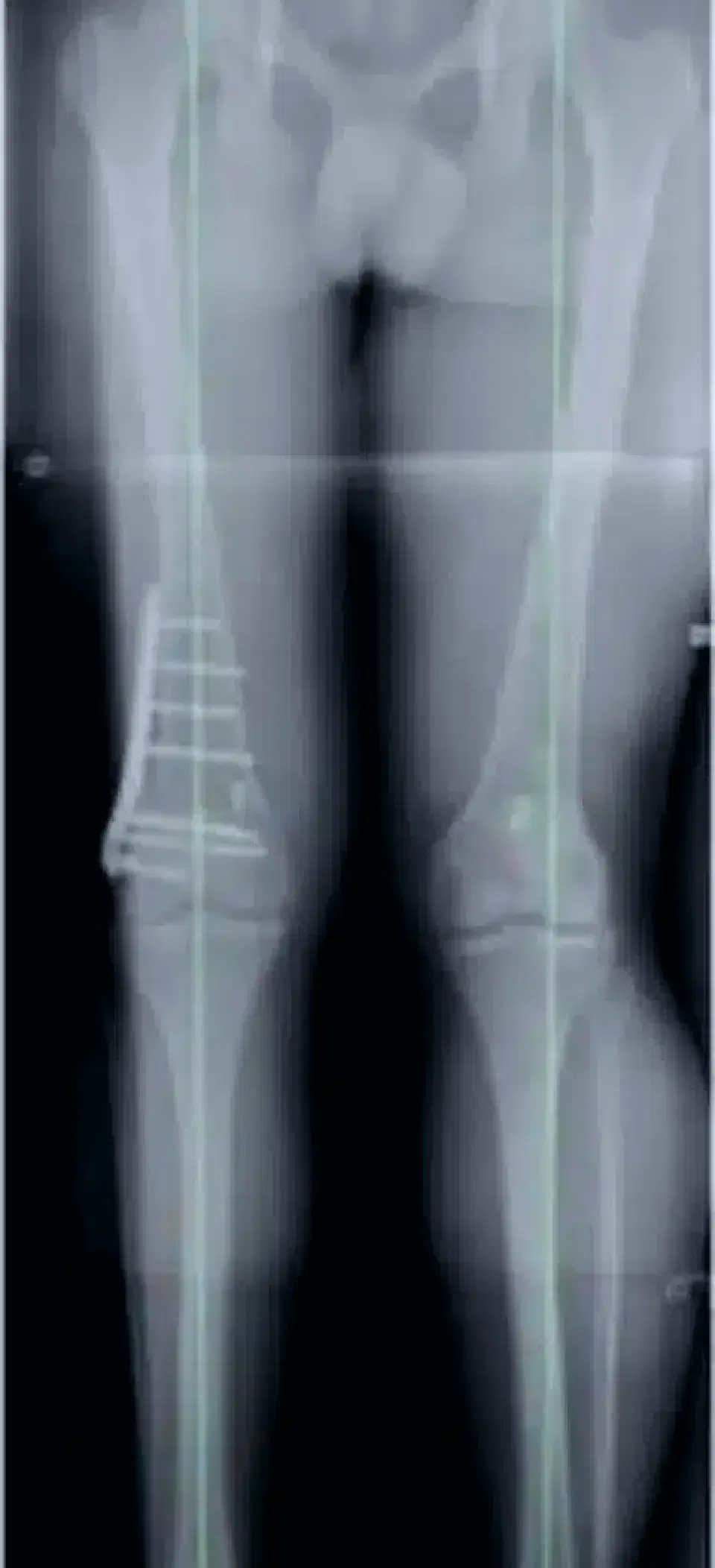
Post-surgery long x-ray showing correction of the left leg axis (green line) through the inner side of the left knee.
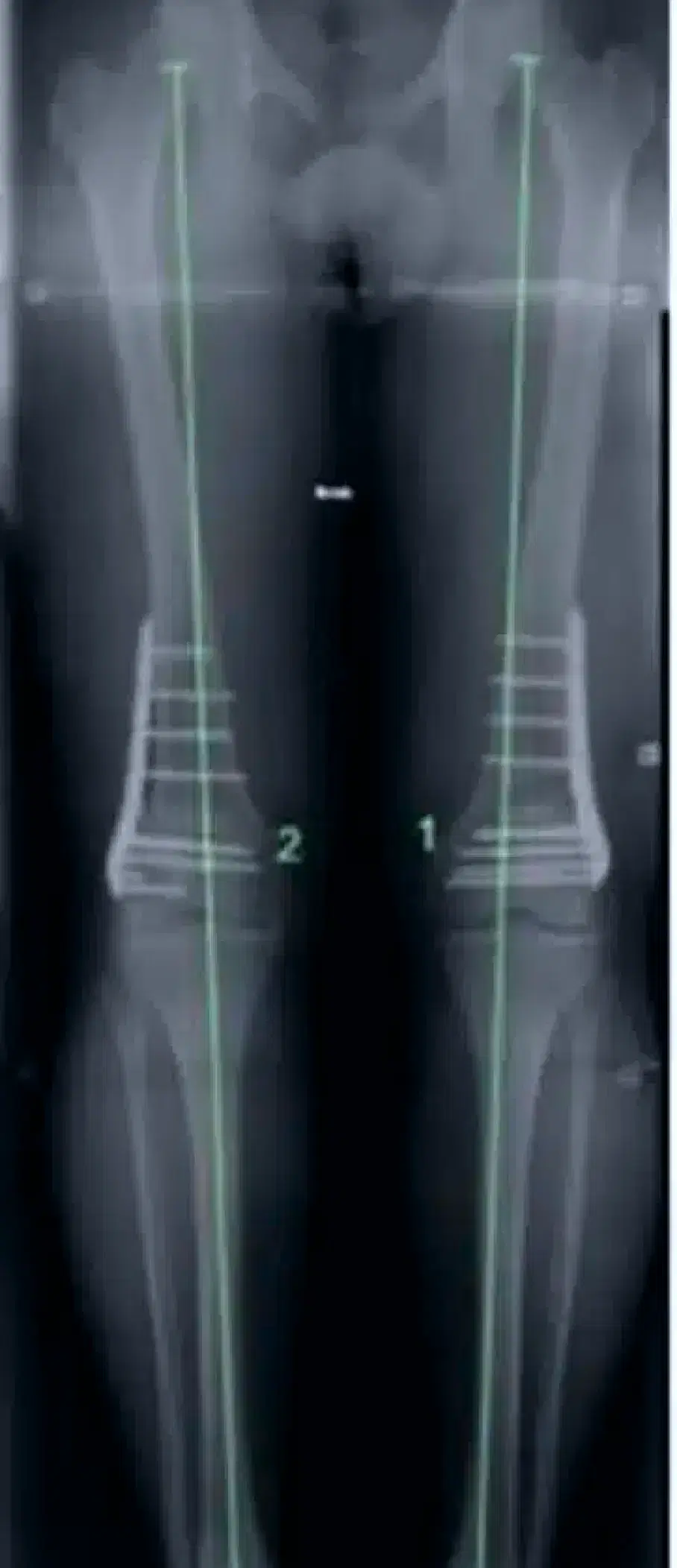
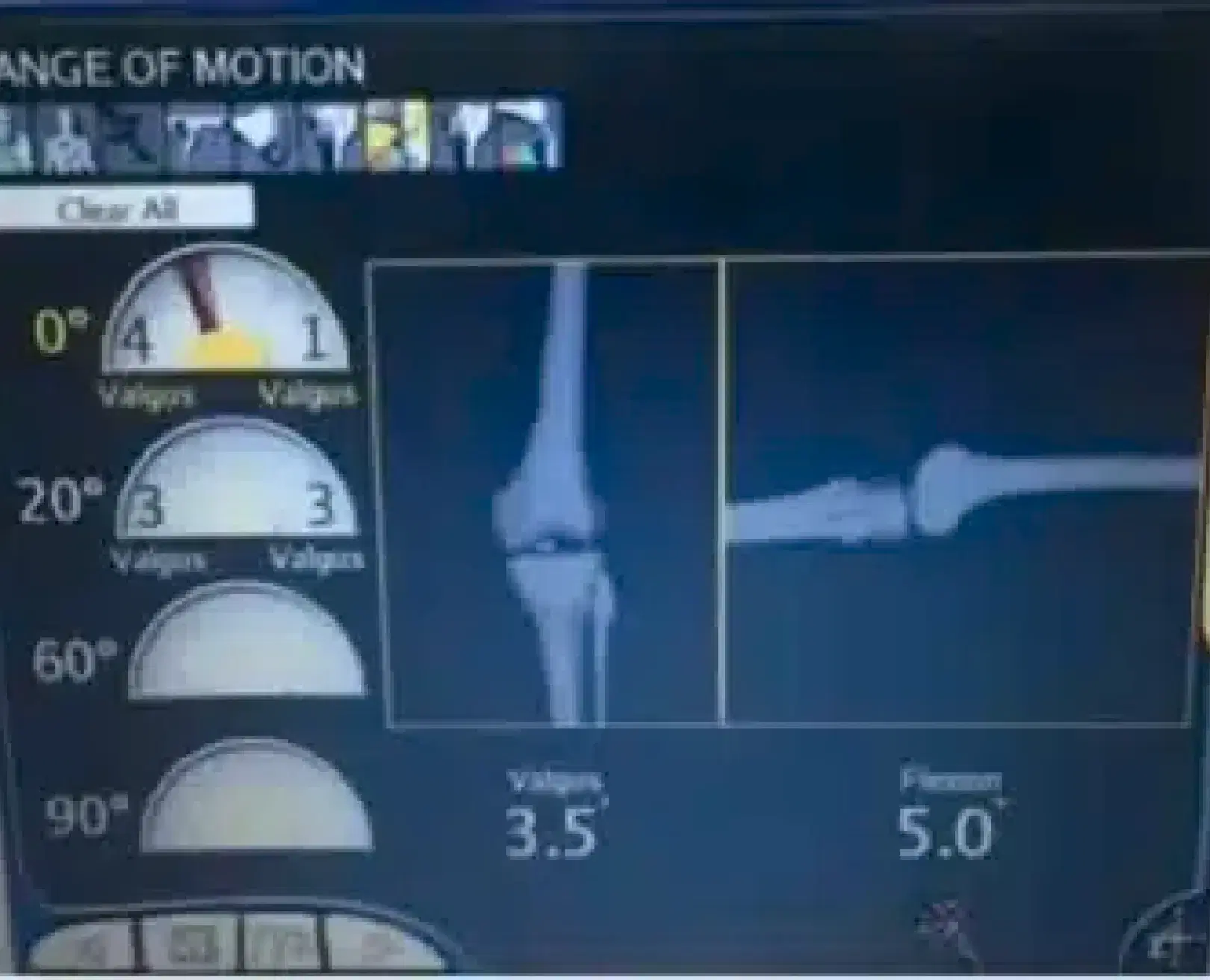 The computer calculates the pre-osteotomy deformity.
The computer calculates the pre-osteotomy deformity.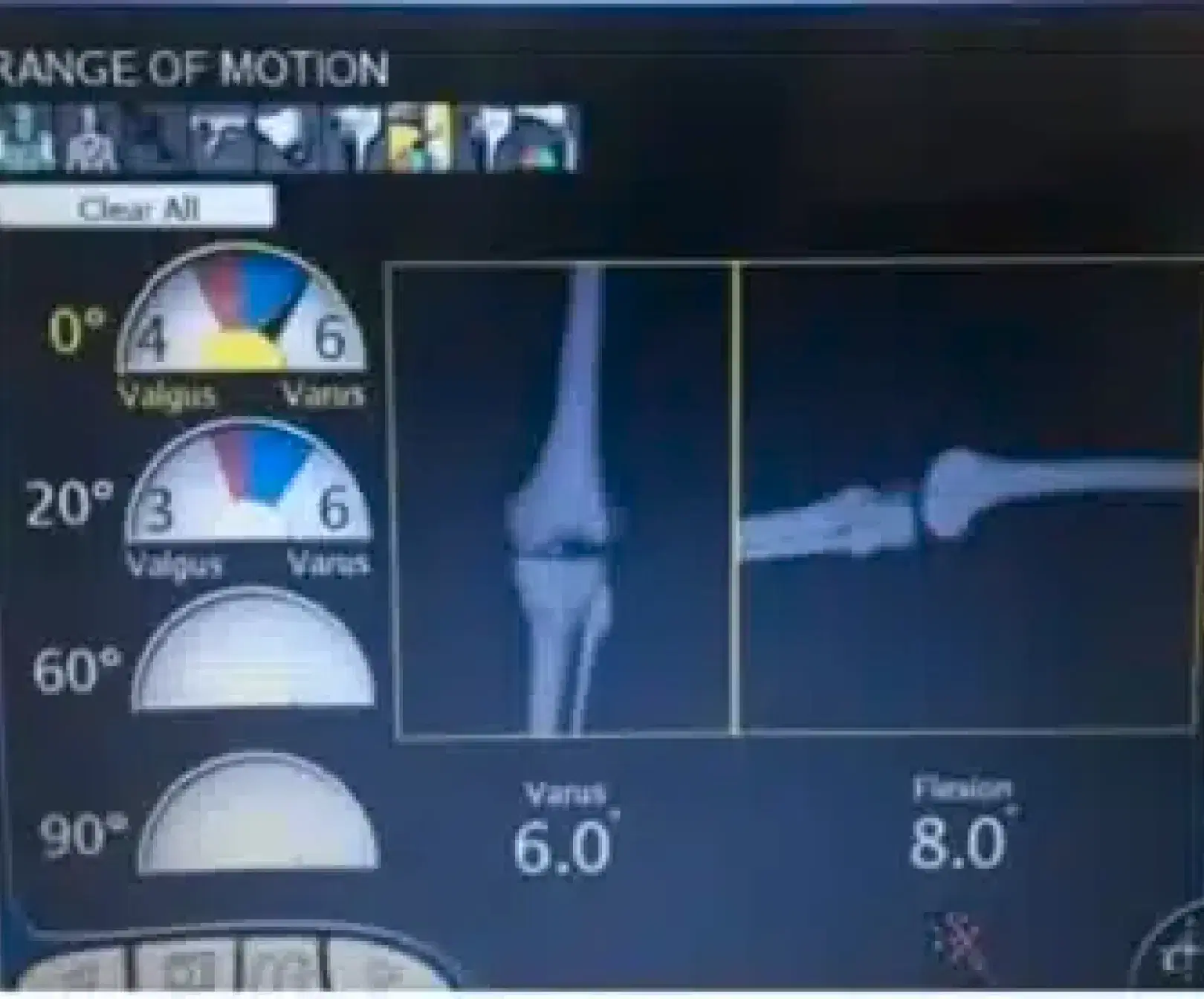 The osteotomy is performed and the deformity is corrected until the predetermined angle is achieved.
The osteotomy is performed and the deformity is corrected until the predetermined angle is achieved.You'll need a brace for 12 weeks after surgery. Initially, it allows full knee straightening and 30-degree bend for 2 weeks. From weeks 2 to 8, the brace will unlock gradually for increased bending.
First 6 weeks: Touch weight bearing for balance only.
Next 6 weeks: Gradually increase weight on leg.
12-week mark: Full weight bearing post-surgery.
On average the surgery takes 2 hours.
The bone will take 12 weeks to heal but the full recovery will take 9-12 months due to the rehabilitation required.
Complications are uncommon but can include

Dr Seeto in affiliation with Medibank Private and East Sydney Private hospital, offers a program for eligible Medibank Private Members, to eliminate medical out of pocket costs for your Knee Replacement.
The program includes a pre-surgery preparation program, spending the minimal time necessary in hospital, as well as home rehabilitation if necessary.